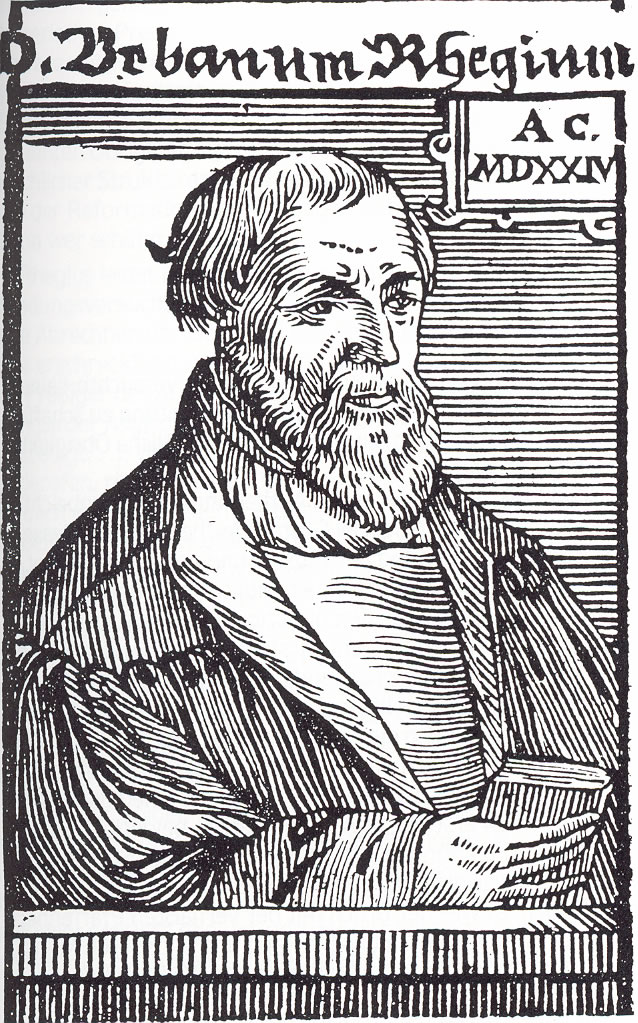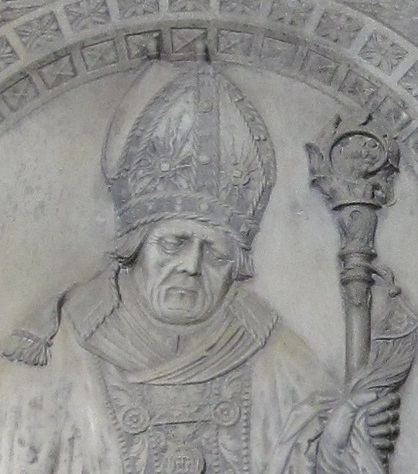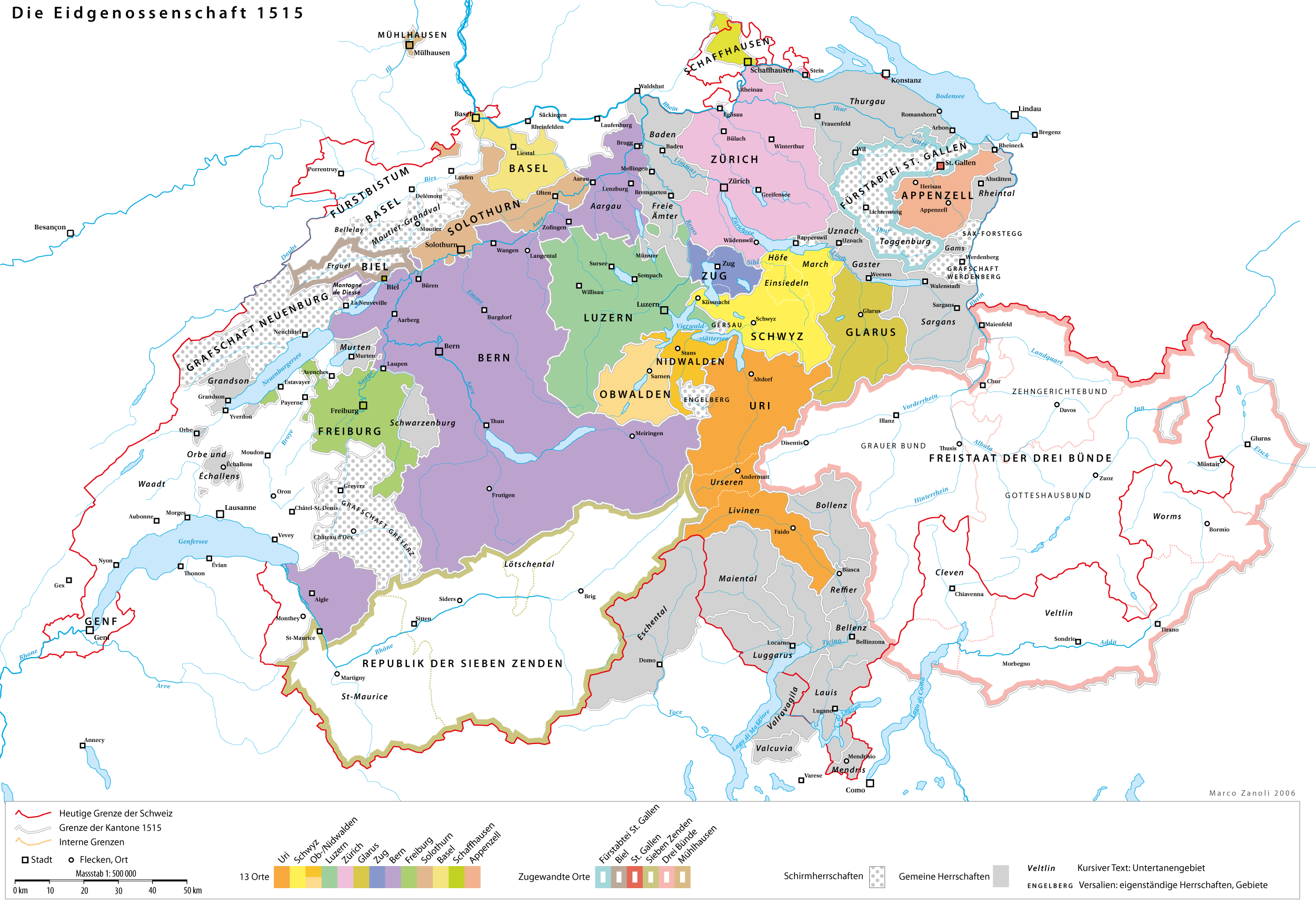|
Urbanus Rhegius
Urbanus Henricus Rhegius or Urban Rieger (May 1489, in Langenargen – 23 May 1541, in Celle) was a Protestant Reformer who was active both in Northern and Southern Germany in order to promote ''Lutheran unity'' in the Holy Roman Empire. He was also a popular poet. Martin Luther referred to him as the "Bishop of Lower Saxony". Life He was born Urban Rieger, the son of Konrad Rieger, a Catholic priest, and his mistress (priests not being allowed to marry) at Langenargen on Lake Constance. He was educated at the Latin school in Lindau and then studied arts at Freiburg University. He befriended Wolfgang Capito at the university. After graduating in 1510 he undertook further studies at Ingolstadt University specifically to come under the tutelage of John Eck, graduating MA in 1516. During this period he was created poet laureate by Emperor Maximilian. In 1519 he went to Konstanz where he befriended Johann Fabri, who encouraged him to train as a preacher, and after brief st ... [...More Info...] [...Related Items...] OR: [Wikipedia] [Google] [Baidu] |
Urban Rieger
Urban means "related to a city". In that sense, the term may refer to: * Urban area, geographical area distinct from rural areas * Urban culture, the culture of towns and cities Urban may also refer to: General * Urban (name), a list of people with the given name or surname * ''Urban'' (newspaper), a Danish free daily newspaper * Urban contemporary music, a radio music format * Urban Outfitters, an American multinational lifestyle retail corporation * Urban Records, a German record label owned by Universal Music Group Place names in the United States * Urban, South Dakota, a ghost town * Urban, Washington, an unincorporated community See also * Pope Urban (other), the name of several popes of the Catholic Church * Urban cluster (other) Urban cluster may refer to: * Urban cluster (UC) in the US census. See List of United States urban areas * Urban cluster (France), a statistical area defined by France's national statistics office * City cluster In Chi ... [...More Info...] [...Related Items...] OR: [Wikipedia] [Google] [Baidu] |
Johann Faber
Johann Faber (1478 – May 21, 1541) was a Catholic theologian known for his writings opposing the Protestant Reformation and the growing Anabaptist movement. Biography Johann Faber, the son of a blacksmith, was born in Leutkirch, Swabia and studied theology and canon law at Tübingen and Freiburg in the Breisgau region and was made doctor of sacred theology in Freiburg. He eventually became minister of Lindau, Vicar-General of Constance in 1517, Chaplain and confessor to King Ferdinand I of Austria in 1524, and Bishop of Vienna in 1530. Like others of his time Faber was at first friendly with the Reformers, Melanchthon, Zwingli, and Oecolampadius, sympathizing with their efforts at reform and opposing certain abuses himself; but when he realized that neither dogma nor the Church itself was spared by the Reformers, he broke with them and became their most consistent opponent. While a canon of the cathedral of Basle Johann Faber formed a friendship with Erasmus that las ... [...More Info...] [...Related Items...] OR: [Wikipedia] [Google] [Baidu] |
1489 Births
Year 1489 ( MCDLXXXIX) was a common year starting on Thursday (link will display the full calendar) of the Julian calendar. Events January–December * March 14 – The Queen of Cyprus, Catherine Cornaro, sells her kingdom to the Republic of Venice. * March 26 – The Treaty of Medina del Campo between England and Spain includes provision for a marriage between Arthur, the son of King Henry VII of England, and Princess Catherine of Aragon. *June 29 – King James IV grants Andrew, Lord Gray, the lands and Barony of Lundie in Scotland. * July 17 – Delhi Sultanate: Sikandar Lodi succeeds Bahlul Khan Lodi as sultan. * November 29 – Arthur Tudor is named Prince of Wales. * December 11 – Jeannetto de Tassis is appointed Chief Master of Postal Services in Innsbruck; his descendants, the Thurn und Taxis Family, later run much of the postal system of Europe. Date unknown * Typhus first appears in Europe, during the Siege of Baza in the Gr ... [...More Info...] [...Related Items...] OR: [Wikipedia] [Google] [Baidu] |
Principality Of Lüneburg
The Principality of Lüneburg (later also referred to as Celle) was a territorial division of the Duchy of Brunswick-Lüneburg within the Holy Roman Empire, immediately subordinate to the emperor. It existed from 1269 until 1705 and its territory lay within the modern-day state of Lower Saxony in Germany. The principality was named after its first capital, Lüneburg (also called Lunenburg in English), which was ruled jointly by all Brunswick-Lüneburg lines until 1637. From 1378, the seat of the principality was in Celle. It lost its independence in 1705 when it was annexed by the Electorate of Brunswick-Lüneburg, but retained its vote in the Reichstag as Brunswick-Celle. Territory When the Principality of Lüneburg emerged as a result of the division of Brunswick-Lüneburg in 1269, the domain of the Lüneburg princes consisted of a large number of territorial rights in the region of Lüneburg. However, it could not be described as a unified state, because many rights were owne ... [...More Info...] [...Related Items...] OR: [Wikipedia] [Google] [Baidu] |
Augsburg Confession
The Augsburg Confession, also known as the Augustan Confession or the Augustana from its Latin name, ''Confessio Augustana'', is the primary confession of faith of the Lutheran Church and one of the most important documents of the Protestant Reformation. The Augsburg Confession was written in both German and Latin and was presented by a number of German rulers and free-cities at the Diet of Augsburg on 25 June 1530. The Holy Roman Emperor Charles V had called on the Princes and Free Territories in Germany to explain their religious convictions in an attempt to restore religious and political unity in the Holy Roman Empire and rally support against the Ottoman invasion in the 16th century Siege of Vienna. It is the fourth document contained in the Lutheran ''Book of Concord''. Background Philipp Melanchthon, Martin Luther and Justus Jonas had already drafted a statement of their theological views in the Articles of Schwabach in 1529,Johann Michael Reu, ''The Augsburg Conf ... [...More Info...] [...Related Items...] OR: [Wikipedia] [Google] [Baidu] |
Philip Of Hesse
Philip I, Landgrave of Hesse (13 November 1504 – 31 March 1567), nicknamed (in English: "the Magnanimous"), was a German nobleman and champion of the Protestant Reformation, notable for being one of the most important of the early Protestant rulers in Germany. Biography Early life and embracing of Protestantism Philip was the son of Landgrave William II of Hesse and his second wife Anna of Mecklenburg-Schwerin. His father died when Philip was five years old, and in 1514 his mother, after a series of struggles with the Estates of Hesse, succeeded in becoming regent on his behalf. The struggles over authority continued, however. To put an end to them, Philip was declared of age in 1518, his actual assumption of power beginning the following year. The power of the Estates had been broken by his mother, but he owed her little else. His education had been very imperfect, and his moral and religious training had been neglected. Despite all this, he developed rapidly as a states ... [...More Info...] [...Related Items...] OR: [Wikipedia] [Google] [Baidu] |
Zwingli
Huldrych or Ulrich Zwingli (1 January 1484 – 11 October 1531) was a leader of the Reformation in Switzerland, born during a time of emerging Swiss patriotism and increasing criticism of the Swiss mercenary system. He attended the University of Vienna and the University of Basel, a scholarly center of Renaissance humanism. He continued his studies while he served as a pastor in Glarus and later in Einsiedeln, where he was influenced by the writings of Erasmus. In 1519, Zwingli became the Leutpriester (people's priest) of the Grossmünster in Zürich where he began to preach ideas on reform of the Catholic Church. In his first public controversy in 1522, he attacked the custom of fasting during Lent. In his publications, he noted corruption in the ecclesiastical hierarchy, promoted clerical marriage, and attacked the use of images in places of worship. Among his most notable contributions to the Reformation was his expository preaching, starting in 1519, through the Gosp ... [...More Info...] [...Related Items...] OR: [Wikipedia] [Google] [Baidu] |
Eucharist
The Eucharist (; from Greek , , ), also known as Holy Communion and the Lord's Supper, is a Christian rite that is considered a sacrament in most churches, and as an ordinance in others. According to the New Testament, the rite was instituted by Jesus Christ during the Last Supper; giving his disciples bread and wine during a Passover meal, he commanded them to "do this in memory of me" while referring to the bread as "my body" and the cup of wine as "the blood of my covenant, which is poured out for many". The elements of the Eucharist, sacramental bread ( leavened or unleavened) and wine (or non-alcoholic grape juice), are consecrated on an altar or a communion table and consumed thereafter, usually on Sundays. Communicants, those who consume the elements, may speak of "receiving the Eucharist" as well as "celebrating the Eucharist". Christians generally recognize a special presence of Christ in this rite, though they differ about exactly how, where, and when Chr ... [...More Info...] [...Related Items...] OR: [Wikipedia] [Google] [Baidu] |
Anabaptism
Anabaptism (from Neo-Latin , from the Greek : 're-' and 'baptism', german: Täufer, earlier also )Since the middle of the 20th century, the German-speaking world no longer uses the term (translation: "Re-baptizers"), considering it biased. The term (translation: "Baptizers") is now used, which is considered more impartial. From the perspective of their persecutors, the "Baptizers" baptized for the second time those "who as infants had already been baptized". The denigrative term Anabaptist, given to them by others, signifies rebaptizing and is considered a polemical term, so it has been dropped from use in modern German. However, in the English-speaking world, it is still used to distinguish the Baptizers more clearly from the Baptists, a Protestant sect that developed later in England. Compare their self-designation as "Brethren in Christ" or "Church of God": . is a Protestant Christian movement which traces its origins to the Radical Reformation. The early Anabaptists ... [...More Info...] [...Related Items...] OR: [Wikipedia] [Google] [Baidu] |
Carmelite
, image = , caption = Coat of arms of the Carmelites , abbreviation = OCarm , formation = Late 12th century , founder = Early hermits of Mount Carmel , founding_location = Mount Carmel , type = Mendicant order of pontifical right , status = Institute of Consecrated Life , membership = 1,979 (1,294 priests) as of 2017 , leader_title = Motto , leader_name = la, Zelo zelatus sum pro Domino Deo exercituumEnglish: ''With zeal have I been zealous for the Lord God of hosts'' , leader_title2 = General Headquarters , leader_name2 = Curia Generalizia dei CarmelitaniVia Giovanni Lanza, 138, 00184 Roma, Italia , leader_title3 = Prior General , leader_name3 = Mícéal O'Neill, OCarm , leader_title4 = Patron saints , leader_name4 = Our Lady of Mt. Carmel, Elijah , parent_organization = Catholic Church , website = ... [...More Info...] [...Related Items...] OR: [Wikipedia] [Google] [Baidu] |
Tyrol
Tyrol (; historically the Tyrole; de-AT, Tirol ; it, Tirolo) is a historical region in the Alps - in Northern Italy and western Austria. The area was historically the core of the County of Tyrol, part of the Holy Roman Empire, Austrian Empire and Austria-Hungary, from its formation in the 12th century until 1919. In 1919, following World War I and the dissolution of Austria-Hungary, it was divided into two modern administrative parts through the Treaty of Saint-Germain-en-Laye: * State of Tyrol: Formed through the merger of North and East Tyrol, as part of Austria * Region of Trentino-Alto Adige: At that time still with Souramont (Cortina d'Ampezzo, Livinallongo del Col di Lana and Colle Santa Lucia) and the municipalities Valvestino, Magasa, and Pedemonte, seized in 1918 by the Kingdom of Italy, and thus since 1946 part of the Italian Republic. With the founding of the European region Tyrol-South Tyrol-Trentino the area has its own legal entity since 2011 in the form of ... [...More Info...] [...Related Items...] OR: [Wikipedia] [Google] [Baidu] |
University Of Basel
The University of Basel (Latin: ''Universitas Basiliensis'', German: ''Universität Basel'') is a university in Basel, Switzerland. Founded on 4 April 1460, it is Switzerland's oldest university and among the world's oldest surviving universities. The university is traditionally counted among the leading institutions of higher learning in the country. The associated Basel University Library is the largest and among the most important libraries in Switzerland. The university hosts the faculties of theology, law, medicine, humanities and social sciences, science, psychology, and business and economics, as well as numerous cross-disciplinary subjects and institutes, such as the Biozentrum for biomedical research and the Institute for European Global Studies. In 2020, the university had 13,139 students and 378 professors. International students accounted for 27 percent of the student body. In its over 500-year history, the university has been home to Erasmus of Rotterdam, Parac ... [...More Info...] [...Related Items...] OR: [Wikipedia] [Google] [Baidu] |


.jpg)






